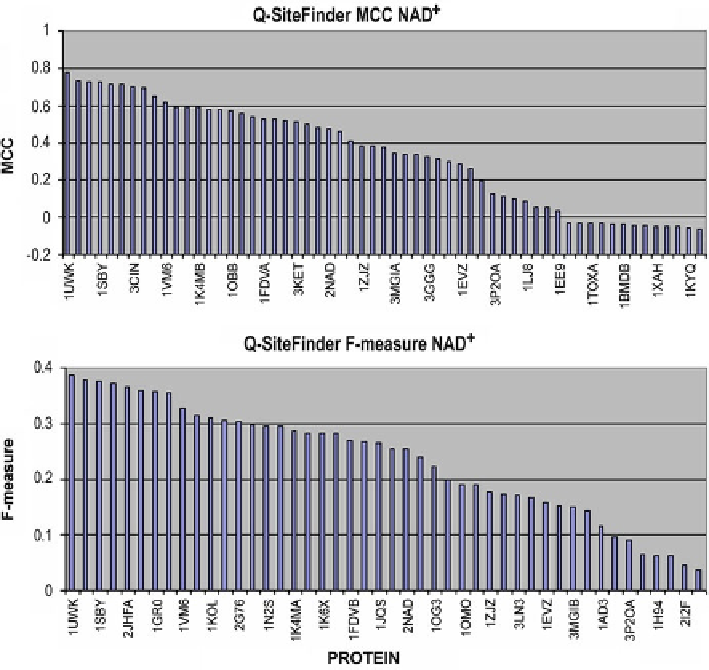Biology Reference
In-Depth Information
Fig. 4.3
Comparison of MCC and F-measure results for NAD
+
-complexing proteins as reported
by Q-SiteFinder
The assessment of F-measure values produced by the FOD model points to
several proteins where such values are particularly high. In each case we find that
the ligand is anchored in a very deep pocket - it seems that the presence of such a
deep void distorts the structure of the protein's hydrophobic core (Fig.
4.5
).
The FOD method is the only one of the presented techniques where results
depend on an assumed cutoff threshold, establishing a discrete transformation over
the
Δ
H
function (i.e. the difference between the assumed and observed hydropho-
bicity distribution). All results discussed in this chapter are based on an 80% thresh-
old, where only those residues for which the
Δ
H
function value is above 80% of
its peak are suspected of involvement in binding ligands.
MCC values fell in the 0.1-0.5 range for most proteins, with approximately 10
cases of negative values being reported.
The SuMo package returns fairly consistent results for MCC and F-measure,
singling out several proteins where the values are particularly high and producing

Search WWH ::

Custom Search